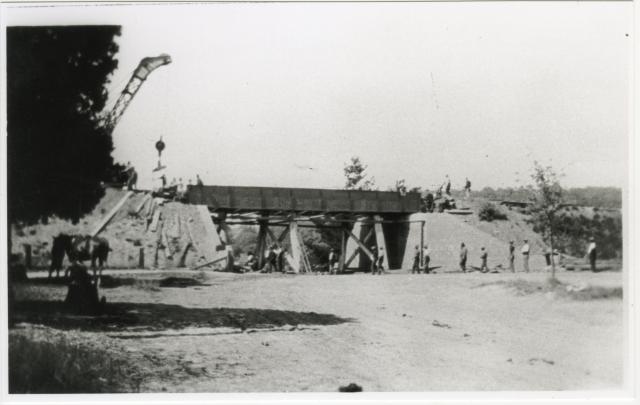
By Mikayla van Loon
At a time when athletes from all over the world were in Melbourne to compete in the 1956 Olympics, a different kind of event was taking place in Lilydale’s backyard.
Last week, Star Mail brought readers a story about author Scott Pearce, the nephew of Raymond Pearce and son of Michael Pearce, who told the tale of his uncle risking his life riding across the Maroondah Highway railway bridge.
Having seen the article, Lilydale resident Alan Dawes contacted the newspaper to tell of his memory of that night, something that has remained with him for over 60 years.
“The bridge itself, the part they rode over, was like a big RSJ beam. It was four foot high, and there was a fall back onto the rails of about four feet. If you fell over the other side, you landed down on the road, which was about a five or six metre drop,” Mr Dawes said.
“But the scary part that horrifies me even now is they had to have four people hold the bike while he mounted it because there was no run up to this beam…And on the other side, they had to catch him because there was a four foot drop back down onto the ground.”
Around 12 years old at the time, Mr Dawes said he was “strictly a spectator” even though the older kids tried to convince him to ride across the bridge.
Mr Dawes said he came to be at the bridge that night because he was in the same Grade 6 class as Michael but many of the boys were aged 18 and down.
Although quite young, Mr Dawes said “I can see it like it was yesterday” and the fear of it has been lodged into his mind as he said “it was scary stuff.”
“It was about 11 o’clock at night. So it wasn’t even daylight and the worst part about it was the beam was about I’d say a foot to 14 inches wide and it had big rivets every four or five inches and he had to navigate over them and not fall, I just think the boy was mad.
“But [Ray] himself was a very gentle, nice boy even though he learned boxing and the whole family was a nice family, the Pearce’s.”
Being the 1950s, Mr Dawes said these kinds of activities weren’t unusual, with kids needing to make their own fun without the parameters of what society allows now.
“[There are so many] stories you could be told from around Lilydale, it was a wild town when I was a kid but not in a bad way,” he said.
“We used to get a sheet of galvanised iron and turn up the end like a toboggan and ride it down the loose fill from the quarry.”
Friday night fishing for eels and black fish was a common way to end the week, as well as spending time at the local tip to pick bits of scrap metal for the makings of a billy cart.
“I wouldn’t say regularly but every now and again a group of us would drag billy carts up the top of the hill and ride them down the bitumen.”
Originally a country boy from Wonthaggi, Mr Dawes said he moved to Lilydale around 11 years of age, just a year or two before the riding across the bridge event, which is possibly why it has left such an impression on him.
From what was a town of large properties and open space, it has changed and been developed significantly.
Mr Dawes said he still goes past where his old house was on the corner of Cave Hill Road and Nicholas Street, even though it has become units.
“I can still see the old house in my head. It was an acre and quarter on the corner [and] it had a big lawn and big garden and a big old house.
“It was just a completely different town to what it is today.”









